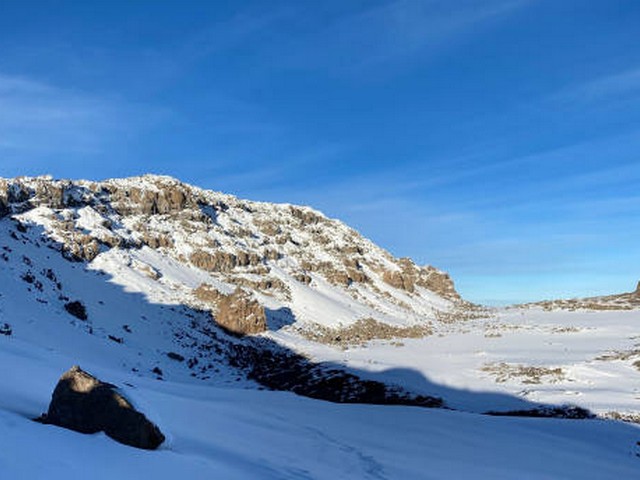Safe Descent Strategies For Kilimanjaro Trekkers
Scaling the majestic Mount Kilimanjaro is a dream many hold dear. Each step towards the summit envelops you in awe of the raw beauty of nature and the challenge that lies ahead. However, as much as the ascent is an exhilarating adventure, the descent is equally critical, perhaps more challenging, and undeniably significant. It’s not just about reaching the top; it’s about returning safely to celebrate your achievements. Here at the Kilimanjaro Centre For Trekking and Ecotourism (KCTE), we’ve mastered the art of safe descents and are excited to share essential strategies that ensure you not only enjoy your climb but also come back down with grace and safety.
Understanding the Importance of a Safe Descent
Descending Mount Kilimanjaro is an integral part of your trekking experience. The journey down can be taxing on your body, especially on your knees and ankles due to the constant gravitational pull. Moreover, the terrain of Kilimanjaro varies, and each step can present different challenges, from loose volcanic ash to slippery rocks. That’s why understanding and preparing for the descent is as crucial as the climb itself.
Strategy 1: Proper Acclimatization
Listen to Your Body
Acclimatization is not just about adjusting to altitude; it’s about understanding your body’s response to the decreasing levels of oxygen. As you plan your descent, it’s crucial to monitor how your body reacts and allow extra time if you feel unwell. Kilimanjaro Centre For Trekking and Ecotourism (KCTE) emphasizes the importance of a gradual descent which helps in reducing altitude sickness and conserves your energy.
Schedule Wisely
We recommend scheduling your descent during the early hours of the morning when the ground is still firm, and the temperature is cooler, providing a stable environment to trek.
Strategy 2: The Right Gear
Invest in Quality Footwear
One cannot emphasize enough the importance of good quality, well-fitted trekking boots. These boots should offer excellent ankle support and have a sturdy grip to handle the slippery slopes of Kilimanjaro.
Use Trekking Poles
Trekking poles are lifesavers. They not only provide balance and support during your descent but also reduce the impact on your knees by sharing the load with your upper body.
Strategy 3: Mastering the Walking Techniques
The Rest Step
This technique is vital in conserving energy. It involves pausing for a brief second with each step to catch your breath and rest your muscles. This method can be incredibly beneficial when navigating through steeper sections.
The Heel-First Step
Walking heel-first uses different muscle groups than those used in regular walking. It helps in reducing fatigue and maintains control, particularly through gravelly or sandy terrains.
Strategy 4: Hydration and Nutrition
Stay Hydrated
Dehydration can lead to a rapid increase in fatigue and can make you more susceptible to altitude sickness. Ensure you are well-hydrated throughout your descent.
Nutritional Needs
Your body will require energy during the descent. Snack on energy bars, fruits, or sandwiches to keep your energy levels consistent.
Strategy 5: Attitude Towards Altitude
Stay Positive
A positive attitude will have a significant impact on your descent. Encourage yourself and your peers, and maintain a steady, optimistic outlook throughout the journey.
Know When to Stop
If you or any of your fellow trekkers feel excessively tired or ill, it’s crucial to stop and rest. Pushing beyond one’s limits can be dangerous on the slopes of Kilimanjaro.
The Significance of Choosing the Right Guide
Booking your Kilimanjaro climb with Kilimanjaro Centre For Trekking and Ecotourism (KCTE) ensures that you are accompanied by experienced guides who are well-versed in all safe descent strategies. They are trained to handle emergencies and are equipped with medical knowledge to ensure your safety throughout the trek.
FAQs About Descending Kilimanjaro
Q1: How long does it take to descend Mount Kilimanjaro?
It typically takes about 2 days to descend, depending on the route and your pace.
Q2: What should I do if I feel sick during the descent?
Immediately inform your guide, rest, hydrate, and follow their instructions. Our guides at KCTE are trained to handle such situations professionally.
Q3: Is it easier to descend than to ascend Kilimanjaro?
Physically, descending is less exhausting than ascending. However, it requires careful attention to technique and safety to prevent injuries.
Q4: Can I descend alone?
We strongly advise against descending alone. Having the support of experienced guides and fellow trekkers is vital for a safe descent.
Q5: What is the best season to descend Kilimanjaro?
The best times are during the dry seasons, from late June to October and from late December to mid-March.
Conclusion: Your Safe Descent, Our Priority
At Kilimanjaro Centre For Trekking and Ecotourism (KCTE), your safety is our utmost priority. By following these safe descent strategies, you will ensure that your trek down Kilimanjaro is as memorable and fulfilling as the climb up. Remember, the descent is not just a return journey; it’s a continuation of your adventure, filled with its own unique challenges and triumphs.
Ready to safely conquer Kilimanjaro? Book your climb with us at KCTE, where we promise to guide you up and bring you back down with stories to tell and a smile on your face. Join us and experience the trek of a lifetime!




